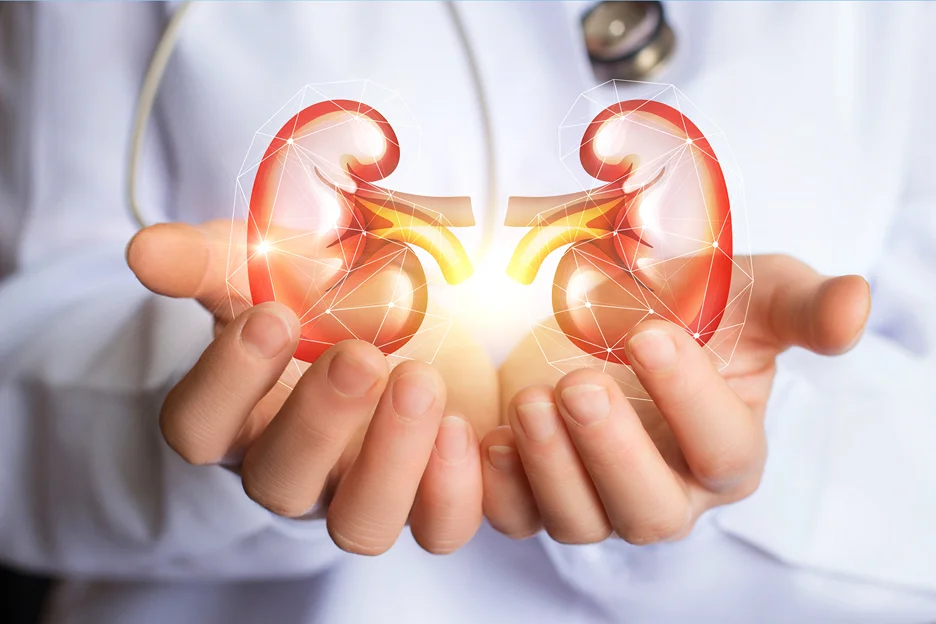Here’s a little health puzzle: What do histamine regulation, waste product balance, and our guts have in common? The answer revolves around Diamine Oxidase (DAO) and uric acid.
Think of DAO as your body’s natural histamine thermostat, and uric acid as the byproduct of certain foods we consume. Both are intricately linked to the health of our intestinal walls.
Let’s pull back the curtain on this connection. Because, like any puzzle, understanding the pieces makes the bigger picture clearer.
Diamine Oxidase (DAO): Your Body’s Histamine Regulator
Your body has its own toolkit to manage what comes its way, and one of its essential tools is Diamine Oxidase, or DAO.
Consider DAO as the behind-the-scenes worker ensuring histamine, a compound from both our body’s production and our diet, stays in check.
Histamine: More than Just an Allergy Mediator
While many of us associate histamine primarily with allergic reactions, its role is multifaceted. Histamine is responsible for several digestive, nervous, and immune system functions.
Through our diet, we consume histamine-rich foods – think of aged, fermented items like cheese, wine, or even pickles.
The Versatility of DAO in Our System
Apart from regulating histamine, DAO wears multiple hats. It’s integral to processes like inflammation control, guiding the immune response, and even aiding wound recovery.
DAO Deficiency & Histamine Overload
Unfortunately, not everyone’s DAO activity is at its optimal. Some individuals experience a dip in the levels of diamine oxidase or its functioning, leading to what’s known as histamine intolerance.
This shortfall means that histamine isn’t effectively broken down, culminating in a surge of symptoms ranging from migraines to digestive discomforts.
Diamine Oxidase and Intestinal Permeability
Along with metabolizing histamine, DAO helps regulate intestinal permeability by “tightening” the spaces between intestinal cells. This intestinal barrier blocks larger molecules like allergens, toxins, and uric acid from leaking out of the digestive tract into the bloodstream.
Uric Acid: From Formation to Excretion

Uric acid is essentially a byproduct formed during the metabolic decomposition of purine nucleotides.
This compound might be more familiar to us in the context of reptiles and birds, where it is the primary form of nitrogen excretion after protein digestion.
In the human context, uric acid emerges from the breakdown of purines that are integral to nucleoproteins.
All About Purines
Purines, while naturally occurring, can elevate uric acid levels if consumed in high amounts.
Foods rich in purines undergo a breakdown process in our body, culminating in the creation of uric acid. While purines themselves aren’t inherently harmful, their overconsumption can tilt the balance of uric acid in our system.
The Kidneys: Uric Acid’s Primary Checkpoint
Our kidneys are the main gatekeepers when it comes to managing uric acid levels. They efficiently filter uric acid from our bloodstream, ensuring its elimination through our urine.
Urate transporters in our kidneys and intestines are pivotal, mediating the absorption of uric acid in the kidneys and aiding its excretion in the intestine.
Intestinal Role in Uric Acid Dynamics
Beyond the kidneys, our intestines also engage in uric acid management. Beneficial bacteria residing in our intestines, such as lactobacillus and pseudomonas, are equipped with enzymes adept at breaking down uric acid.
Intestinal Walls: Our Body’s Multifaceted Defender
The walls of our intestines, technically referred to as the gastrointestinal walls, exhibit a meticulously organized structure when observed microscopically.
These walls are intricately layered, predominantly featuring the submucosa – a dense connective tissue layer teeming with blood vessels, lymphatics, and nerves.
These elements intricately branch out into both the mucosal and muscular layers of the intestine.
The Small Intestine: A Digestive Dynamo
The small intestine is not just the longest stretch in our gastrointestinal tract; it’s also a hub of action. This is where our food undergoes transformation into a liquid form, enabling the absorption of most nutrients.
The walls of the small intestine boast a dense mucosa peppered with numerous glands that skillfully secrete and absorb.
Specifically, in regions like the jejunum and ileum, the mucosa secretes digestive enzymes and mucus, all the while soaking up essential nutrients.
The Large Intestine: The Final Processing Zone
While the small intestine is bustling with nutrient absorption, the large intestine focuses on the endgame.
Its main tasks involve absorbing water and electrolytes, concocting and absorbing specific vitamins, and forming feces, eventually directing them toward the rectum for expulsion.
DAO Production: Intestinal Walls at the Helm
The intestinal walls are not just passive barriers; they actively participate in producing and releasing Diamine Oxidase (DAO). While DAO is also produced in regions like the kidneys and thymus, the intestinal lining plays a pivotal role in its generation.
Uric Acid Regulation: The Intestinal Role
As previously discussed, our intestinal walls further extend their functionality by participating in the management of uric acid.
They house urate transporters which are crucial in determining how much uric acid gets reabsorbed and how much is excreted.
Moreover, the friendly bacteria, or the intestinal flora, within our intestines engage in uric acid decomposition.
The Remarkable Influence of Gut Bacteria on Our Health
Gut Bacteria: The Silent DAO Producers
While these gut residents certainly influence histamine levels, the connection between specific bacterial species and DAO production remains an area of active exploration.
As the curtain gradually lifts, researchers continue to delve into understanding the precise mechanisms at play.
Uric Acid and the Bacterial Breakdown
Venturing into the realm of uric acid, gut bacteria again prove their influential role. Certain symbiotic bacterial strains, like lactobacillus and pseudomonas, come equipped with enzymes tailored to break down uric acid.
Thanks to these microbial workers, uric acid undergoes a transformation, yielding beneficial compounds like oxalate and glycine, which are essential for our body’s carbon and nitrogen supply.
If Intestinal Walls Are Compromised, How Might It Affect DAO Production and Uric Acid Absorption?
However, when these walls face compromise due to factors like inflammation or infections, DAO production may be adversely affected.
Reduced DAO levels hinder the body’s ability to efficiently handle excess histamine. This inadequacy can surge histamine levels, resulting in symptoms mirroring allergic reactions.
Uric Acid Balance: Why Intestinal Walls Matter
Uric acid, though often unnoticed, requires a delicate equilibrium in the body. The intestinal walls house specific transporters essential for managing this balance.
They shepherd uric acid from our bloodstream to the intestine for proper excretion.
Gut Microbiota: The Unseen Allies in Uric Acid Breakdown
Our gut isn’t just about digestion. It’s home to a myriad of bacteria that actively participate in breaking down uric acid.
Bacteria such as lactobacillus and pseudomonas are known for their enzymatic prowess in handling uric acid.
But, a compromised intestinal environment might disrupt this microbial balance, potentially skewing uric acid production.
Takeaway: The Criticality of Intestinal Well-being

The well-being of our intestinal walls is not just about digestion. It’s about ensuring the smooth production of DAO and maintaining the right uric acid levels. Any disruption to the integrity of these walls can cascade into health challenges tied to both DAO and uric acid imbalances.
FAQs on Intestinal Walls, Diamine Oxidase, and Uric Acid
What is the connection between Diamine Oxidase and the Intestinal Barrier Function?
Diamine Oxidase (DAO) is primarily produced in the intestinal walls. A robust Intestinal Barrier Function ensures the efficient production and release of DAO, which plays a vital role in breaking down histamine in our system. A compromised barrier may hinder DAO activity, potentially leading to histamine imbalances.
How can Intestinal Barrier Dysfunction affect Levels Of Diamine Oxidase and Uric Acid?
Intestinal Barrier Dysfunction can impact the production and activity of DAO. Reduced levels of Diamine Oxidase may contribute to histamine buildup in the blood. Additionally, a compromised intestinal wall can disrupt the absorption and excretion balance of Uric Acid, possibly leading to irregularities in uric acid levels in the body.
Can a Low-Histamine Diet aid in cases of compromised Intestinal Permeability and Mast Cell Activation Syndrome?
Absolutely. A Low-Histamine Diet can be beneficial for individuals with compromised Intestinal Permeability or those experiencing Mast Cell Activation Syndrome. By reducing dietary histamine, there’s less reliance on Diamine Oxidase to break it down, offering relief from potential symptoms.
What role does Intestinal Flora play in Diamine Oxidase Activity and Uric Acid management?
Intestinal Flora or gut bacteria play a crucial role in our overall health. Some of these bacteria assist in the production of DAO. Additionally, certain symbiotic bacteria, like lactobacillus, contribute to the breakdown of uric acid, aiding in maintaining its balance within the system.
Are there treatments for diseases linked to DAO and Uric Acid imbalances stemming from intestinal issues?
Yes, Treatment of Diseases associated with DAO and Uric Acid imbalances often revolves around dietary modifications, supplementation, and addressing the root cause, which can often be related to the gut’s health. Approaches might include a Low-Histamine Diet, enzyme supplements, or interventions to repair Intestinal Barrier Dysfunction.
